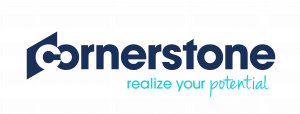This blog post is an excerpt from GovLoop’s recent guide, “Your Guide to the Top 4 Trends in Government HR.” Download the full guide here.
The learning platform market is evolving to help solve some of the longest-standing challenges in government human resources. These challenges include outdated technology, underutilized learning content, and lack of data for tracking and reporting. Learning experience platforms take learning to the next level by offering curation and content aggregation for an organization’s digital learning assets. This enables HR departments to have new, more advanced ways to help their employees get the skills and training they need when they need them in the flow of their work.
To learn more about how government HR leaders can leverage learning experience platforms, GovLoop sat down with Steve Dobberowsky, Senior Principal of Thought Leadership and Advisory Services at Cornerstone on Demand. Cornerstone is dedicated to helping workforces get the most out of talent management through comprehensive learning platforms and solutions.
Dobberowsky cited a recent Deloitte report highlighting that 83 percent of organizations thought the problem of skills development was urgent. “Across government, agencies are being asked to do more with less and the technology is becoming more urgent to accommodate the needs of the modern learner,” Dobberowsky said. “Employees today have very limited time for learning and development.”
Employee expectations are also changing. As training moves to more digital formats, employees are forming new preferences and habits for their learning. They easily become overwhelmed, distracted and impatient with rigid training formats. They are also starting to take control over their own development.
“You can’t send today’s modern learner off on a two-week course and expect them to come back having learned everything they need to do on the job,” Dobberowsky said. “Organizations need to focus on how employees are consuming learning and make sure that they have access to training when and how they want it.”
Learning experience platforms help meet the modern learner’s needs by offering training that is mobile and able to accommodate flexible work schedules and lifestyles. Additionally, learning experience platforms offer on-demand knowledge where employees can access information they need in real time through a variety of channels.
“The learning experience platform goes beyond the traditional learning management system by curating and aggregating content while serving it to the individual employee,” Dobberowsky said. “All the content is available through the learner experience platform.”
With curated and aggregated content, learning is more consumable, customized and easier to find. This promotes long-term learning in organizations. In addition, key benefits to a learning experience platform include:
- Collaborative learning: Employees can connect with experts and peers who share similar learning and work interests.
- Multiple channels and content partners: Employees have the ability to track learning activities delivered via multiple channels. This supports the modern learner’s need for self-directed learning by incorporating training wherever and however it happens.
Organizations like Cornerstone focus on offering a comprehensive approach to their learning experience platform — addressing the needs of both organizations and learners. Cornerstone offers employee-centric digital learning capabilities through personalization and a new “Netflix-style” user interface with curated content recommendations, as well as playlist, collaboration and sharing capabilities similar to Spotify. Additionally, learners can gain access to video-enabled, mobile-ready courses that will be continually refreshed from leading providers, including TedTalks.
“We have a holistic approach to learning,” Dobberowsky said. “We take our modern learning experience platform and combine it with customized learning that recommends what you should watch next. Our platform is designed to meet the employees where they are. We’re even adopting various types of subscriptions to content based on a number of factors: industry, functional, regional and thematic. We believe our approach allows the user to have more control over their content and its delivery.
To make the most of learning experience platforms and help the modern learner in government, Dobberowsky recommended that HR leaders find out where and how their employees learn. “Determine how they consume content, and discover their learning styles and preferences,” he said. “Be open to transformation of technologies and processes.”
With digitization rapidly changing the way learners consume content, it’s up to organizations and their HR leaders to ensure they’re staying ahead of the modern learner’s needs. Using a learning experience platform can help HR departments keep up with modern learner demands while better training and equipping government workforces with the skills they need.






Leave a Reply
You must be logged in to post a comment.